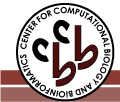| General information | | DisProt: | DP00352 | | Name: | Glycyl-glycine endopeptidase lytM | | Synonym(s): | LYTM_STAA8
EC 3.4.24.75
Autolysin lytM
| | First appeared in release: | Release 3.0 (02/17/2006) | | UniProt: | O33599 | | UniGene: | | | SwissProt: | LYTM_STAA8 | | TrEMBL: | | | NCBI (GI): | 109940093 | | Source organism: | Staphylococcus aureus | | Sequence length: | 316 | | Percent disordered: | 11% | | Homologues: | |
| Native sequence |
10 20 30 40 50 60
| | | | | |
MKKLTAAAIA TMGFATFTMA HQADSAETTN TQQAHTQMST QSQDVSYGTY YTIDSNGDYH - 60
HTPDGNWNQA MFDNKEYSYT FVDAQGHTHY FYNCYPKNAN ANGSGQTYVN PATAGDNNDY - 120
TASQSQQHIN QYGYQSNVGP DASYYSHSNN NQAYNSHDGN GKVNYPNGTS NQNGGSASKA - 180
TRSGHAKDAS WLTSRKQLQP YGQYHGGGAH YGVDYAMPEN SPVYSLTDGT VVQAGWSNYG - 240
GGNQVTIKEA NSNNYQWYMH NNRLTVSAGD KVKAGDQIAY SGSTGNSTAP HVHFQRMSGG - 300
IGNQYAVDPT SYLQSR
|
| Functional narrative |
Peptidoglycan hydrolase (autolysin) specifically acting on polyglycine interpeptide bridges of the cell wall peptidoglycan.
|
| Map of ordered and disordered regions |


Note: 'Mouse' over a region to see the start and stop residues. Click on a region to see detailed information.
|
| Region 1 | | Type: | Disordered | | Name: | | | Location: | 200 - 212 | | Length: | 13 | | Region sequence: |
PYGQYHGGGAHYG | | Modification type: | Fragment
Native
| | PDB: | | | Structural/functional type: | Relationship to function unknown
| | Functional classes: | Unknown
| | Functional subclasses: | Metal binding
| Detection methods:
- X-ray crystallography (294 K; pH: 4.5; protein 12 mg/ml; Tris-HCl 0.1 M; Mono-ammonium dihydrogen phosphate 2 M)
- X-ray crystallography (294 K; pH: 6.8; protein 12 mg/ml; PEG 8000 (30%); Ammonium sulfate 0.2 M; Sodium cacodylate 0.1 M; Sodium acetate 1 M)
- X-ray crystallography (294 K; pH: 6.5; L(+)-tartrate 0.2 M; Mes 0.1 M; PEG 8000 (30%); protein 12 mg/ml)
| References:
- Firczuk M, Mucha A, Bochtler M. "Crystal Structures of Active LytM." J Mol Biol. 2005. PubMed: 16269153
| Comments:The fragment used to determine the crystal structure consisted of residues 185-316.
|
| Region 2 | | Type: | Disordered | | Name: | | | Location: | 237 - 242 | | Length: | 6 | | Region sequence: |
SNYGGG | | Modification type: | Fragment
Native
| | PDB: | | | Structural/functional type: | Relationship to function unknown
| | Functional classes: | Unknown
| | Functional subclasses: | Unknown
| Detection methods:
- X-ray crystallography (294 K; pH: 4.5; Mono-ammonium dihydrogen phosphate 2 M; protein 12 mg/ml; Tris-HCl 0.1 M)
- X-ray crystallography (294 K; pH: 6.8; Ammonium sulfate 0.2 M; PEG 8000 (30%); protein 12 mg/ml; Sodium acetate 1 M; Sodium cacodylate 0.1 M)
- X-ray crystallography (294 K; pH: 6.5; L(+)-tartrate 0.2 M; Mes 0.1 M; PEG 8000 (30%); protein 12 mg/ml)
| References:
- Firczuk M, Mucha A, Bochtler M. "Crystal Structures of Active LytM." J Mol Biol. 2005. PubMed: 16269153
| Comments:The fragment used to determine the crystal structure consisted of residues 185-316.
|
| Region 3 | | Type: | Disordered | | Name: | | | Location: | 281 - 290 | | Length: | 10 | | Region sequence: |
SGSTGNSTAP | | Modification type: | Fragment
Native
| | PDB: | | | Structural/functional type: | Relationship to function unknown
| | Functional classes: | Unknown
| | Functional subclasses: | Unknown
| Detection methods:
- X-ray crystallography (294 K; pH: 4.5; Mono-ammonium dihydrogen phosphate 2 M; protein 12 mg/ml; Tris-HCl 0.1 M)
- X-ray crystallography (294 K; pH: 6.8; Ammonium sulfate 0.2 M; PEG 8000 (30%); protein 12 mg/ml; Sodium acetate 1 M; Sodium cacodylate 0.1 M)
- X-ray crystallography (294 K; pH: 6.5; L(+)-tartrate 0.2 M; Mes 0.1 M; PEG 8000 (30%); protein 12 mg/ml)
| References:
- Firczuk M, Mucha A, Bochtler M. "Crystal Structures of Active LytM." J Mol Biol. 2005. PubMed: 16269153
| Comments:The fragment used to determine the crystal structure consisted of residues 185-316.
|
| Region 4 | | Type: | Disordered | | Name: | | | Location: | 299 - 305 | | Length: | 7 | | Region sequence: |
GGIGNQY | | Modification type: | Fragment
Native
| | PDB: | | | Structural/functional type: | Relationship to function unknown
| | Functional classes: | Unknown
| | Functional subclasses: | Unknown
| Detection methods:
- X-ray crystallography (294 K; pH: 4.5; Mono-ammonium dihydrogen phosphate 2 M; protein 12 mg/ml; Tris-HCl 0.1 M)
- X-ray crystallography (294 K; pH: 6.8; Ammonium sulfate 0.2 M; PEG 8000 (30%); protein 12 mg/ml; Sodium acetate 1 M; Sodium cacodylate 0.1 M)
- X-ray crystallography (294 K; pH: 6.5; L(+)-tartrate 0.2 M; Mes 0.1 M; PEG 8000 (30%); protein 12 mg/ml)
| References:
- Firczuk M, Mucha A, Bochtler M. "Crystal Structures of Active LytM." J Mol Biol. 2005. PubMed: 16269153
| Comments:The fragment used to determine the crystal structure consisted of residues 185-316.
|
| References |
- Ramadurai L, Jayaswal RK. "Molecular cloning, sequencing, and expression of lytM, a unique autolytic gene of Staphylococcus aureus." J Bacteriol. 1997; 179(11): 3625-31. PubMed: 9171409
|
| If you have any comments or wish to provide additional references to this protein or its disordered region(s), please click here to e-mail us. |
Disprot-footer
|










